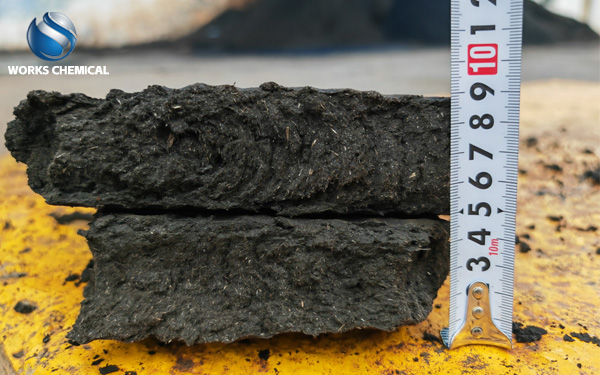
During the production process, paper mills generate a large amount of sludge. This sludge is complex in composition, containing wood fibers, fillers, residual chemicals, and a certain amount of organic matter, etc. It is characterized by high moisture content, high viscosity, and difficulty in dewatering. Traditional dewatering methods often fail to achieve deep dewatering, and the moisture content of the treated sludge remains relatively high. This not only increases transportation and disposal costs but may also have potential environmental impacts. The emergence of sludge enhancers has provided an effective solution for the deep dewatering of sludge in paper mills.

The reason why sludge enhancers can be applied to the deep dewatering of sludge in paper mills is closely related to their unique mechanism of action. The sludge surface structure modifier it contains can change the surface properties of fibers and particles in the sludge of paper mills, reduce their surface tension and viscosity, break the adsorption force between sludge particles, and disperse the originally entangled and adhered fibers and particles. Meanwhile, the cell wall disruptor in it can destroy the cellular structure of microorganisms in the sludge, release the water and colloidal substances within the cells, further disintegrating the stable structure of the sludge and creating favorable conditions for the detachment of water.
In practical applications, after adding the sludge enhancer to the sludge of the paper mill, through thorough mixing and reaction, and then through plate and frame machine and other filter press equipment for filtration, the deep dewatering effect can be significantly improved. The sludge from paper mills treated by traditional dewatering methods usually has a moisture content of over 80%. The sludge is in a thin paste or loose state and is difficult to form. After using the sludge enhancer, the flocs formed by the sludge become more compact and stable. During the filtration process, they can withstand greater pressure and effectively squeeze out the water in the sludge. The moisture content of the treated sludge can be reduced to below 60%, and even reach around 50%. The volume of the sludge is significantly reduced, forming a hard and structurally complete mud cake.
For instance, a large-scale paper mill previously used traditional polyaluminium chloride combined with polyacrylamide as a dehydrating agent. The moisture content of the treated sludge was 82%, and a large amount of sludge was produced every day, with high transportation costs. After switching to the sludge efficiency enhancer, the sludge moisture content was reduced to 55% through the plate and frame filter press, and the sludge volume was cut by nearly half. The number of transportation times was significantly reduced, and a large amount of transportation costs could be saved every year. Meanwhile, the formed mud cakes have a relatively high hardness, which is convenient for stacking and subsequent disposal. Some of the mud cakes can also be resourcefully utilized, such as being used to make building materials, achieving the goal of turning waste into treasure.
In addition, sludge enhancers also have other advantages in the deep dewatering of sludge in paper mills. Its addition amount is relatively small, which can reduce the cost of the agent. And it will not cause corrosion to the filter press equipment, reducing the maintenance cost of the equipment. Meanwhile, no secondary pollution will be generated during the processing, meeting environmental protection requirements.
In conclusion, the sludge enhancer, with its outstanding performance, has played a significant role in the deep dewatering of sludge in paper mills, effectively reducing the moisture content of sludge, achieving the reduction, stabilization and harmless treatment of sludge, and providing strong support for the sludge treatment of paper mills.